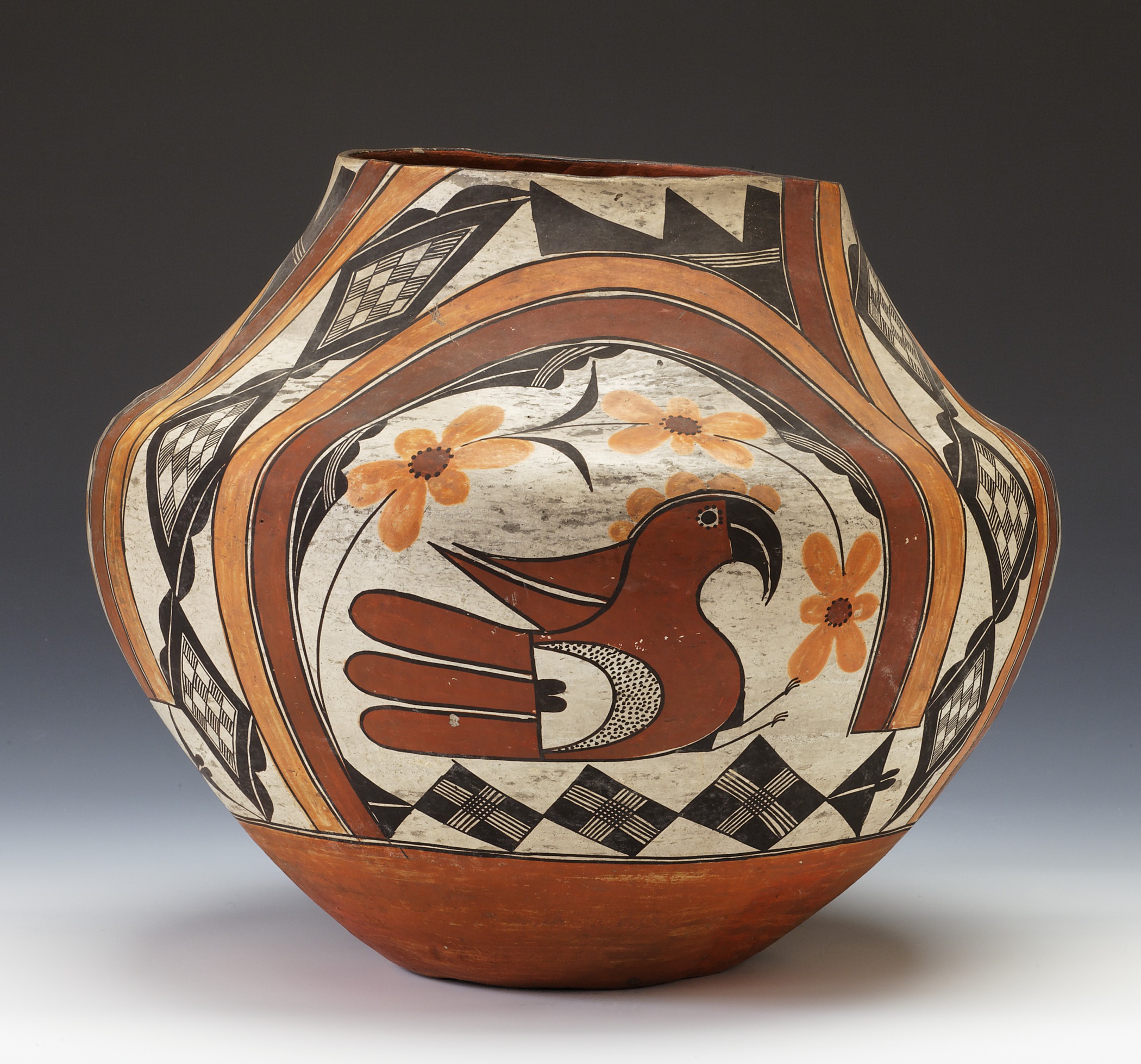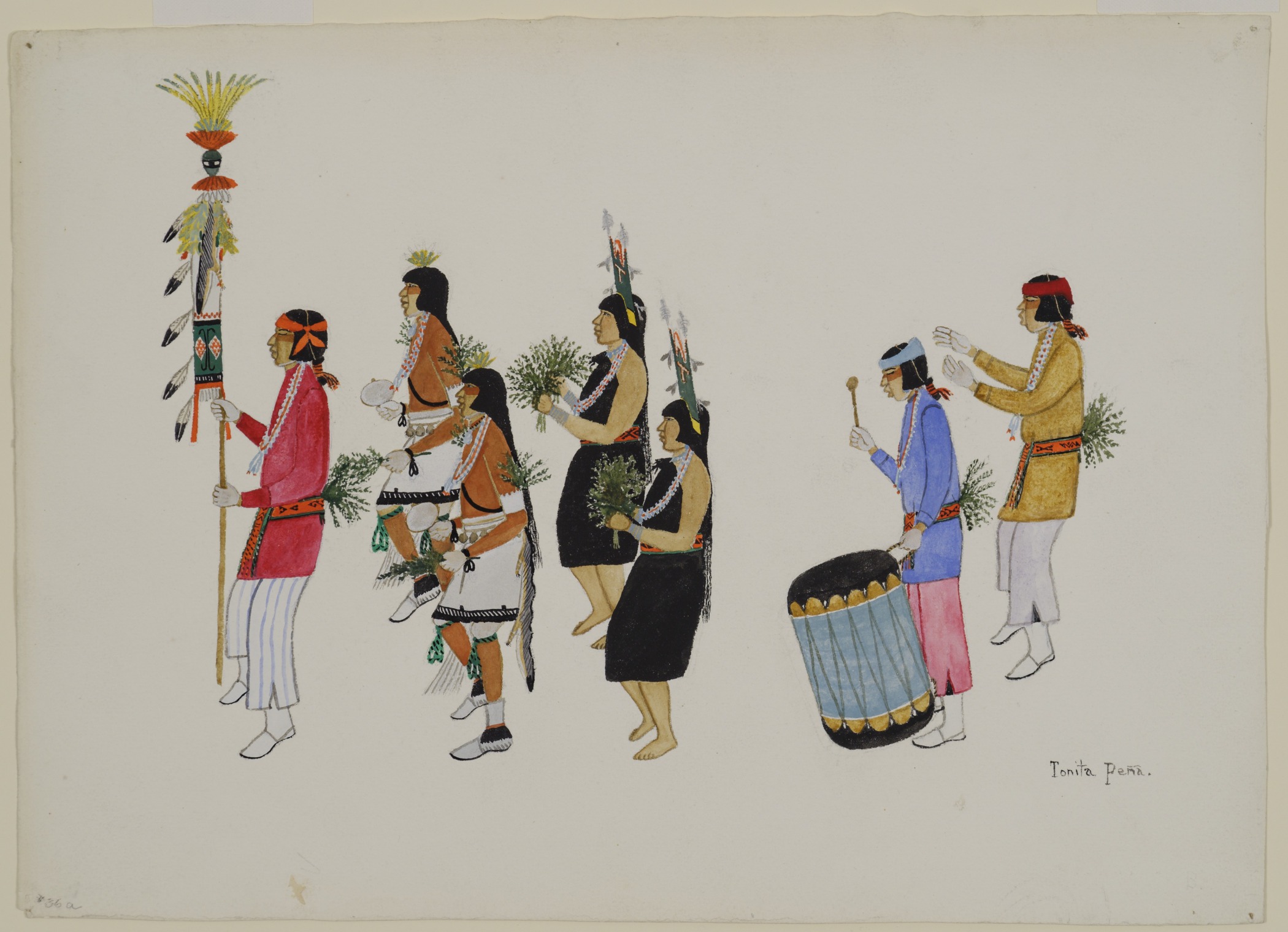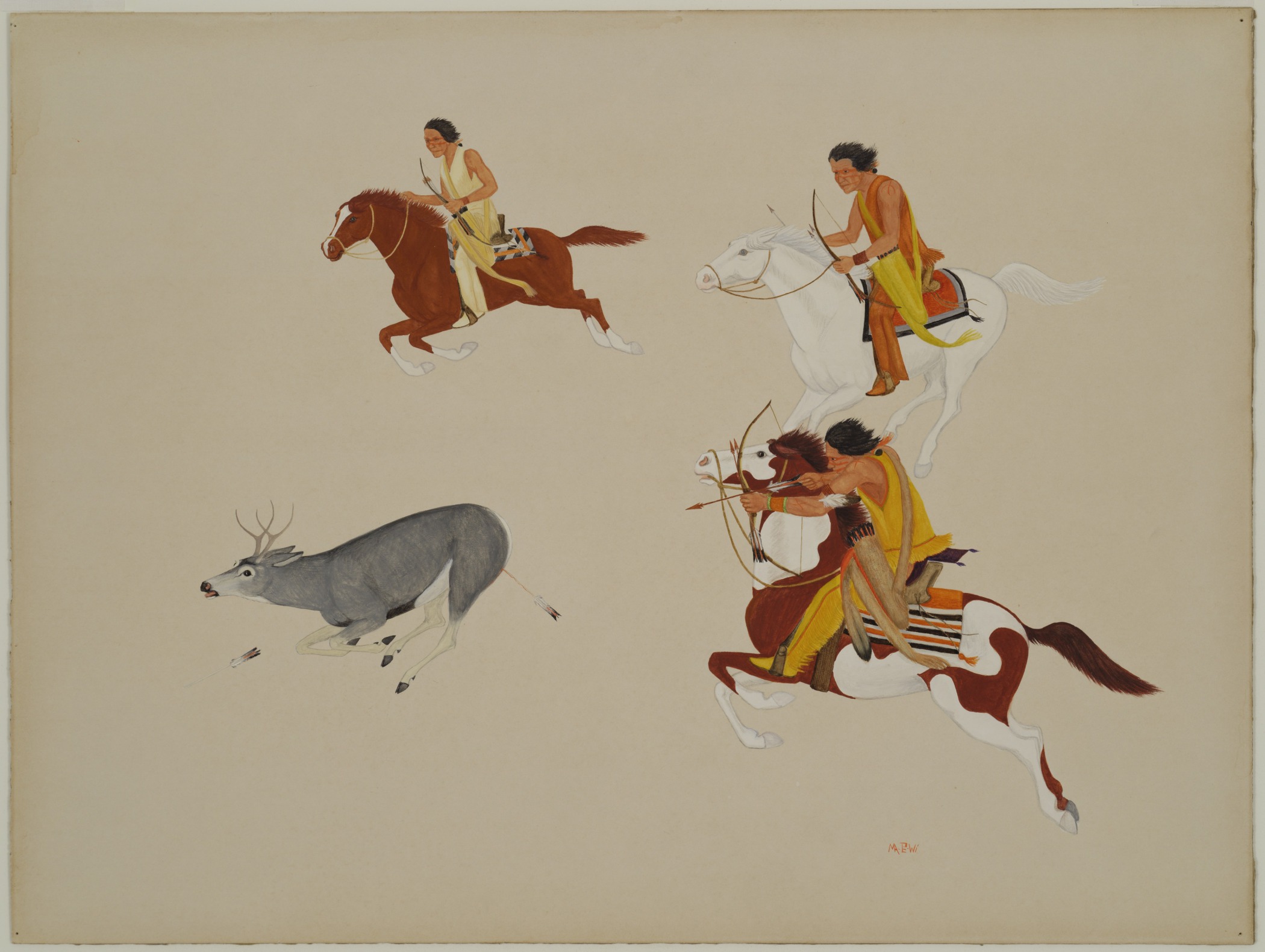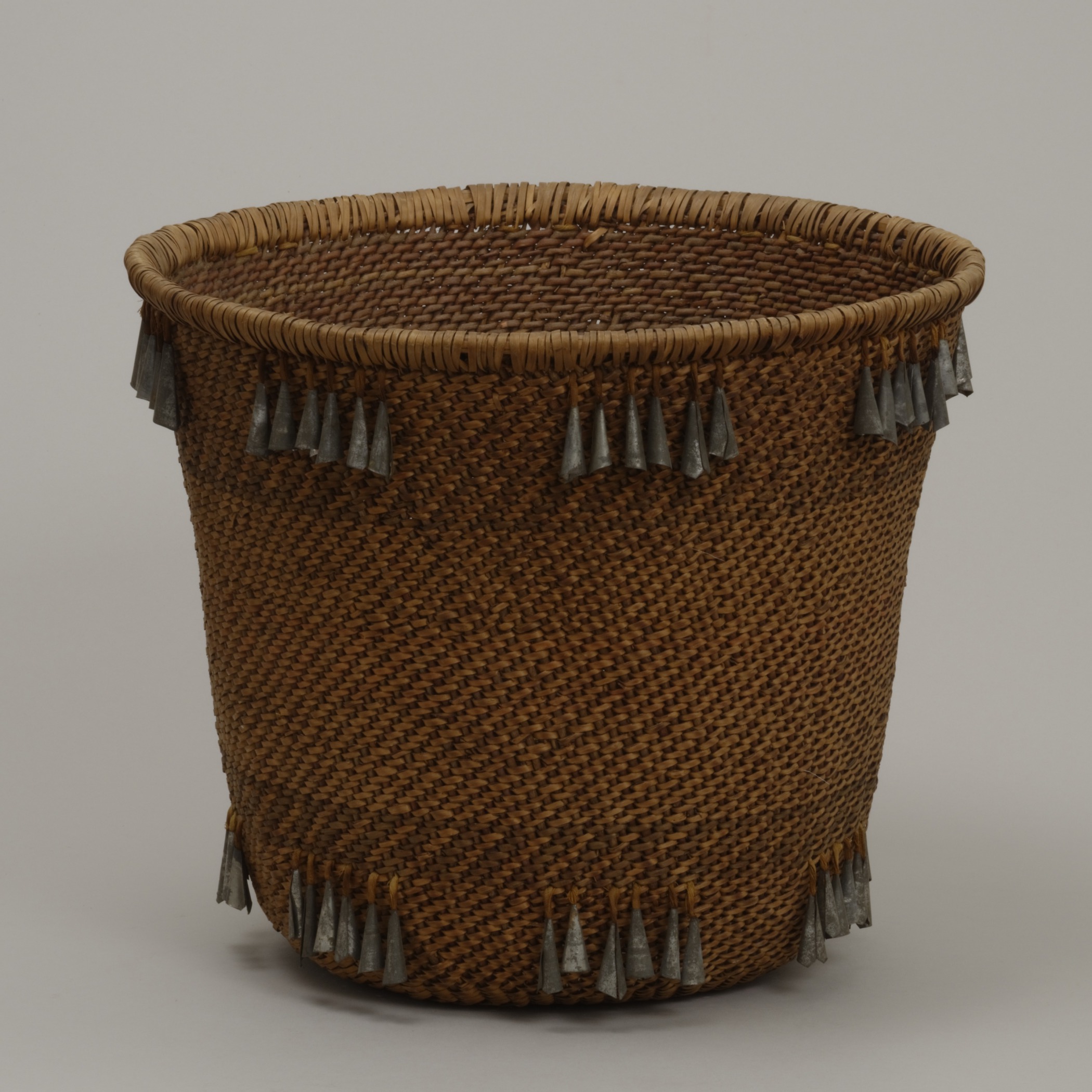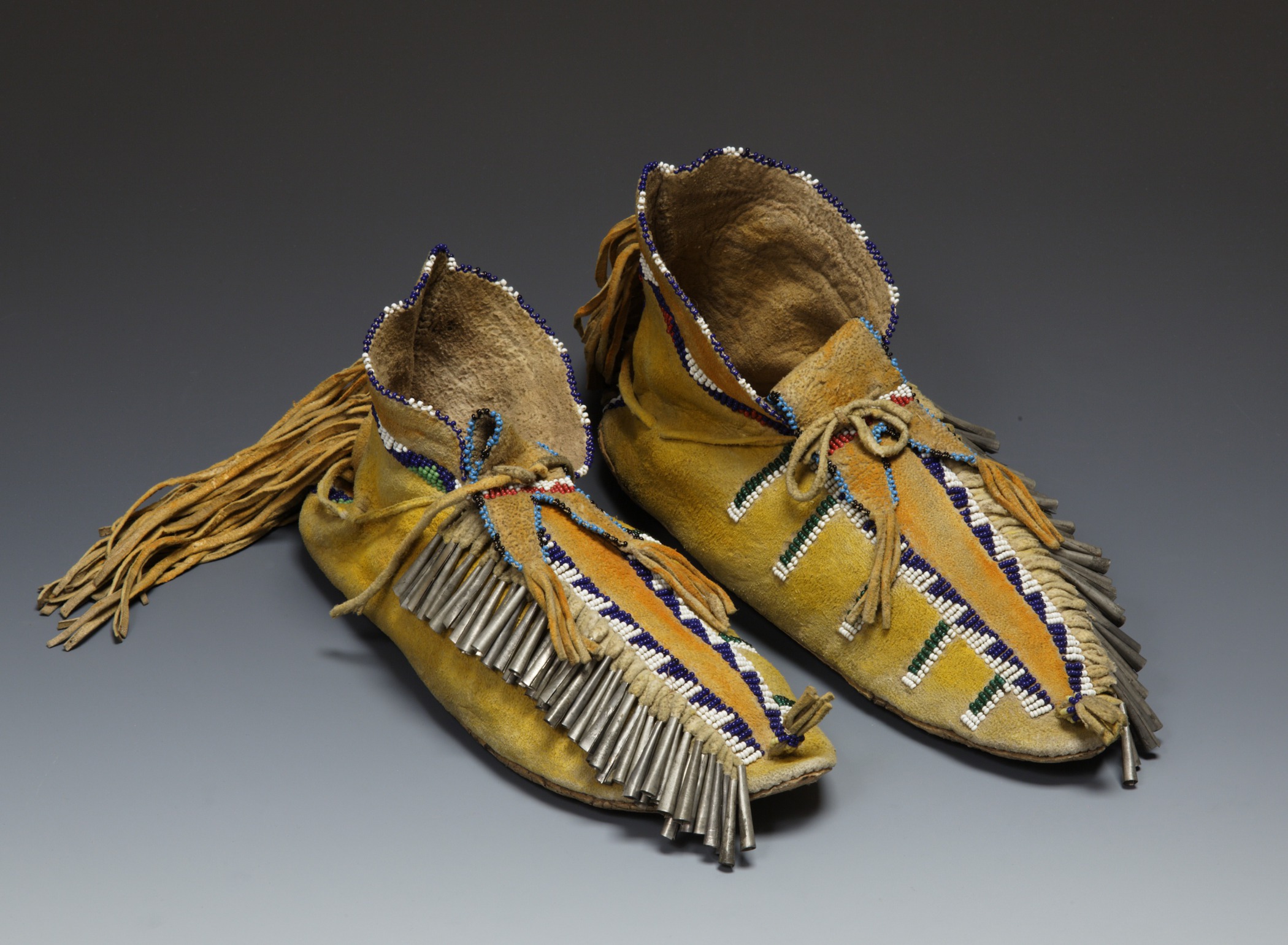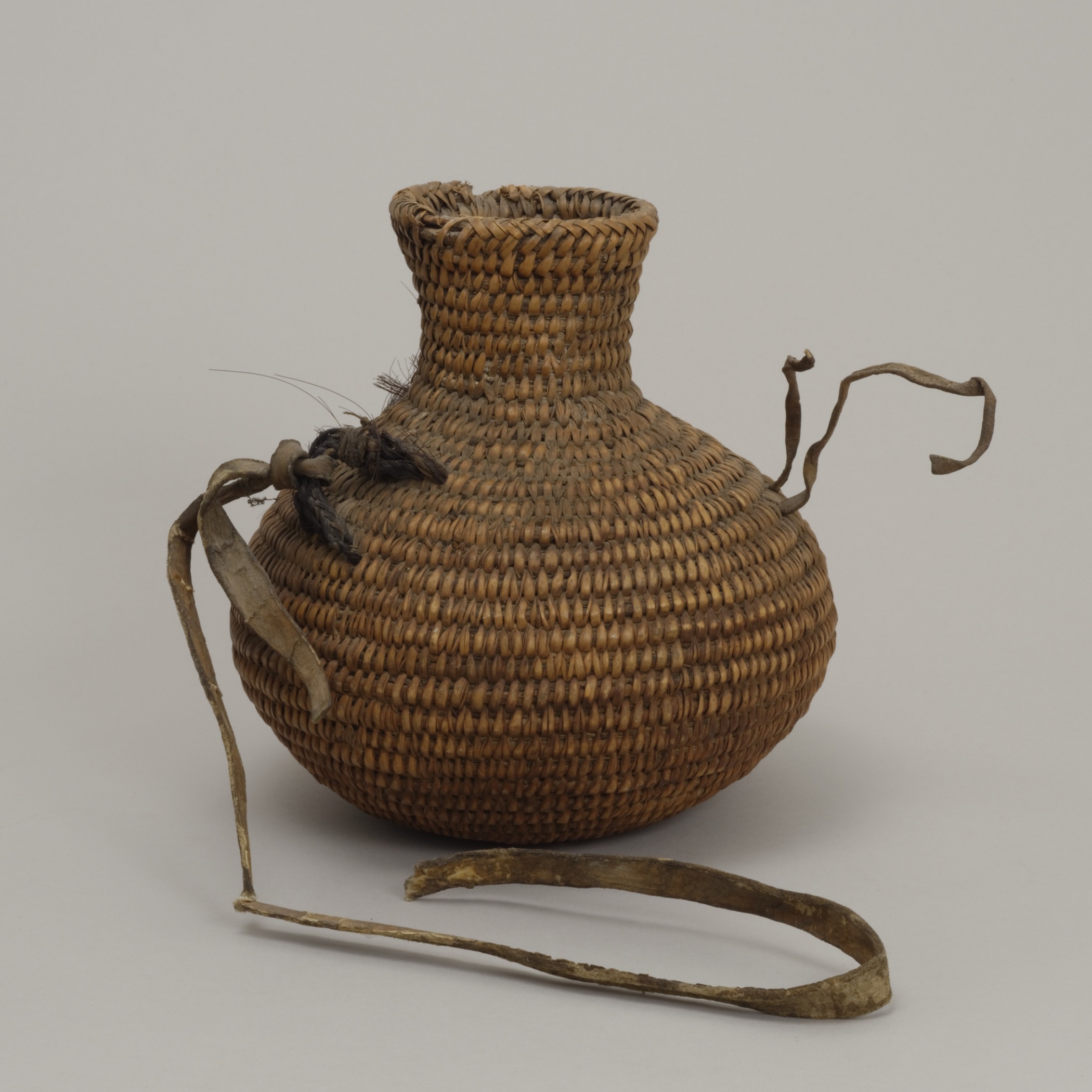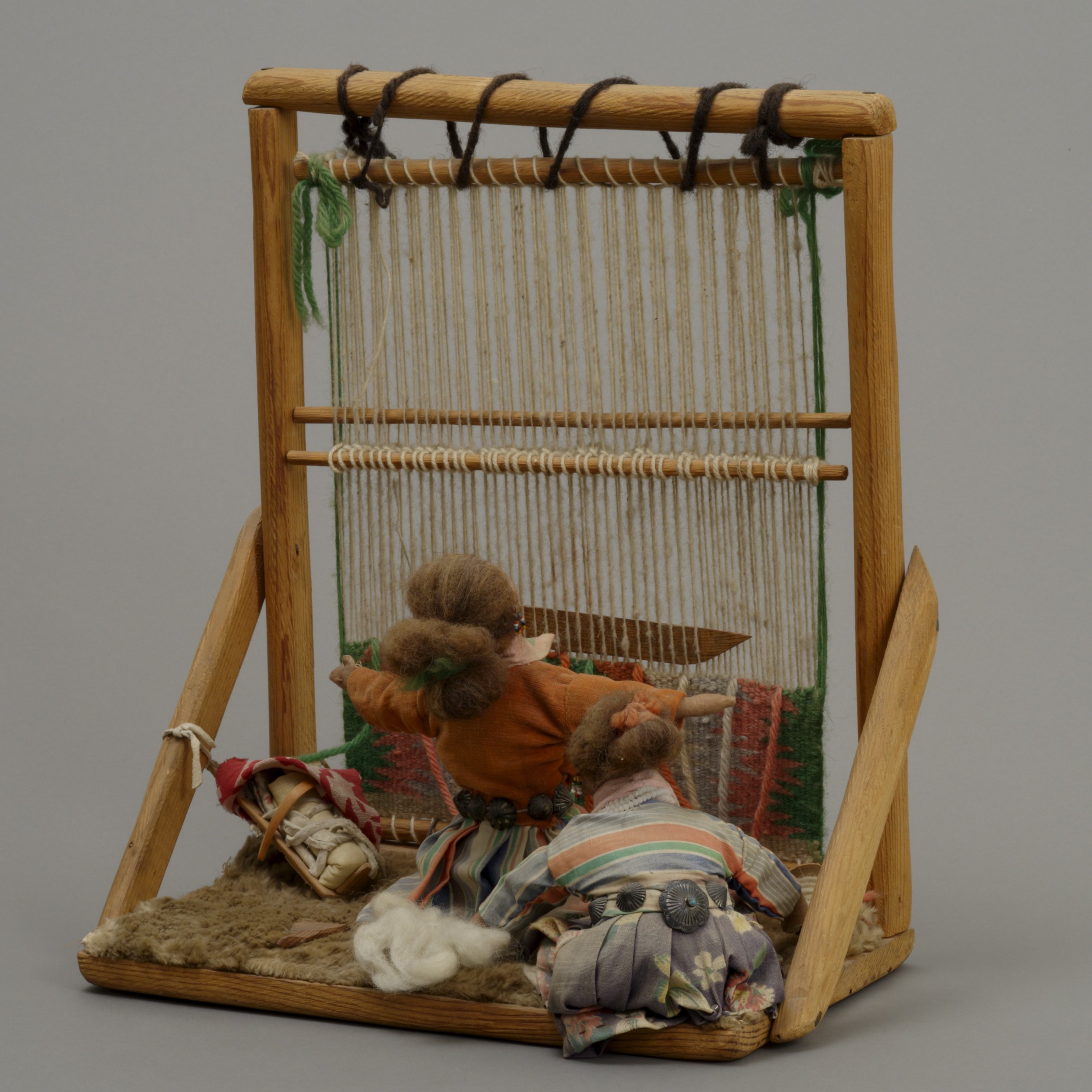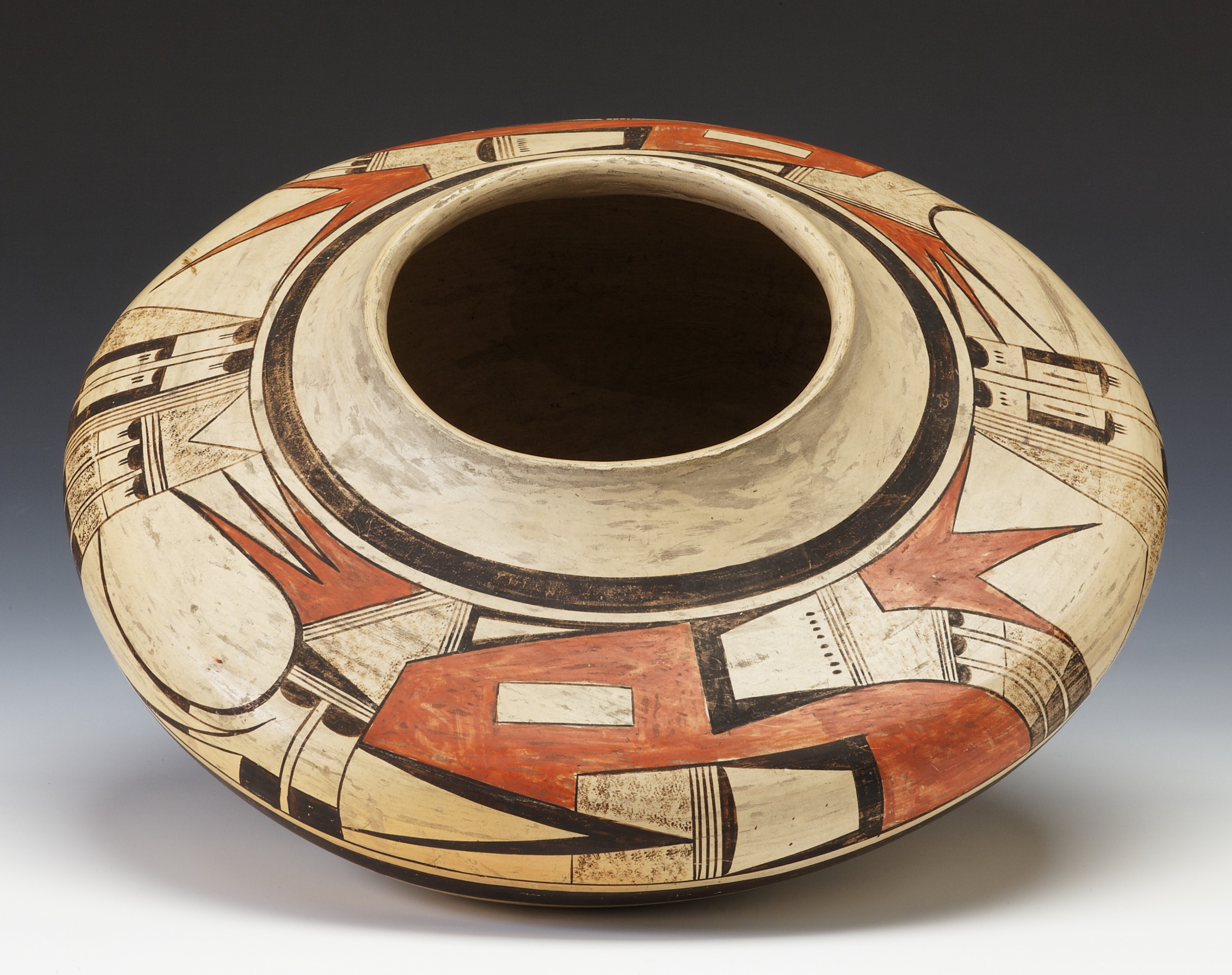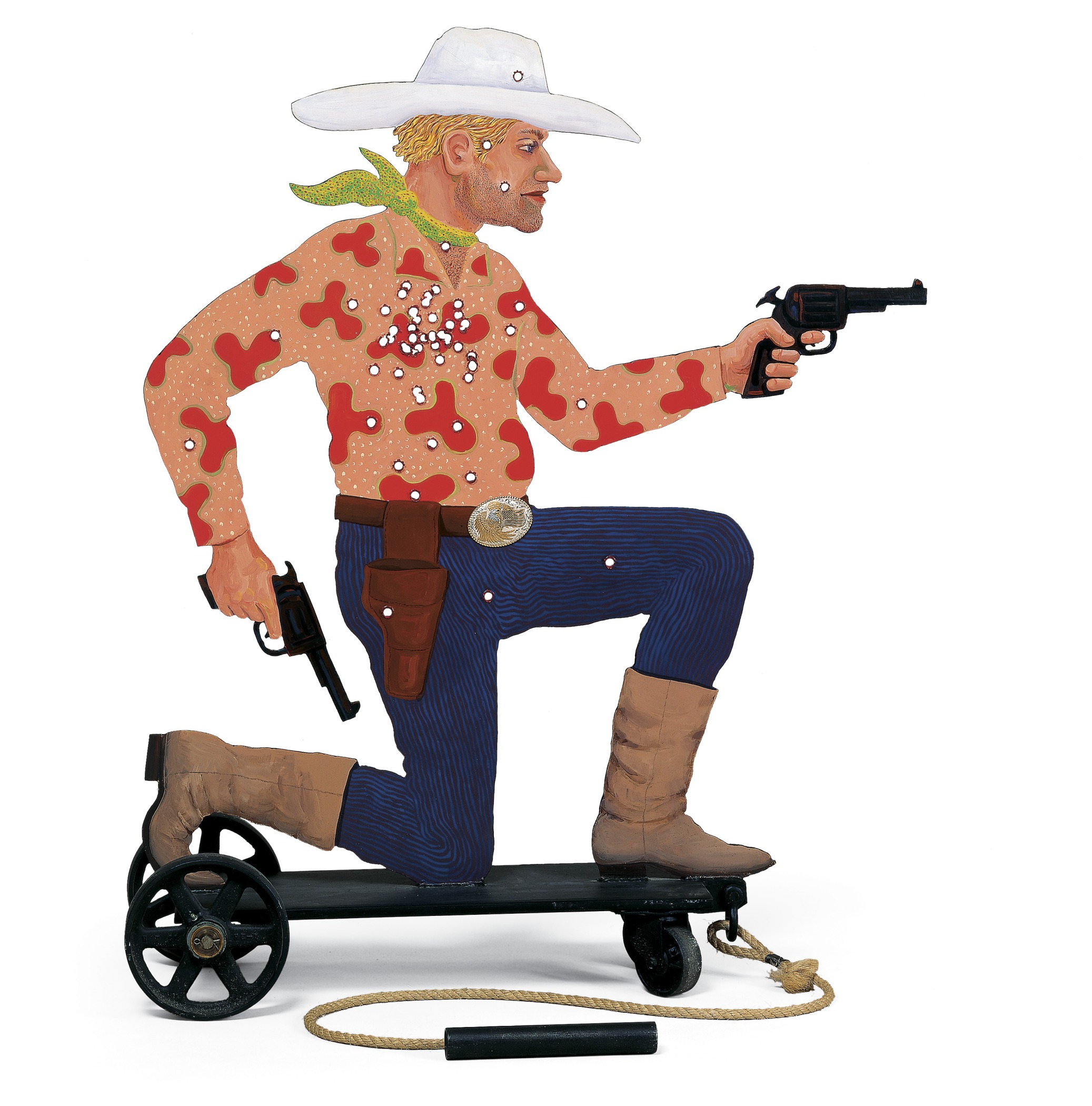Historically, the cultures of the Southwest fell into two categories: agricultural and hunter/gatherer. Pueblo Indians were expert farming people. They raised crops of corn, beans, squash, and sunflowers, as well as cotton and tobacco, and taught these skills to other tribes. The Diné (Navajo) and Apache were expert hunters and also gathered nuts, fruits, and herbs. When the Spanish arrived, they brought goats, sheep, wheat, melons, apricots, and other agricultural products. Southwestern cultures added these new foods to their diets.
In the arid climate of the Southwest, however, the most vital resource was, and continues to be, water. Native arts and ceremony focus on rainmaking to sustain life and nurture crops. Images of the sun, clouds, rainbows, and lightning appear frequently in pottery, paintings, clothing, music, and dance.
The lifestyle of Southwestern people has changed over time. Some people still live on the lands of their ancestors, while others have moved away. People shop in grocery stores, eat in restaurants, and enjoy the full range of food items available in contemporary society. Many, however, continue to prepare traditional foods and honor traditional lifeways through farming, hunting, cooking, ceremony, and the arts.


